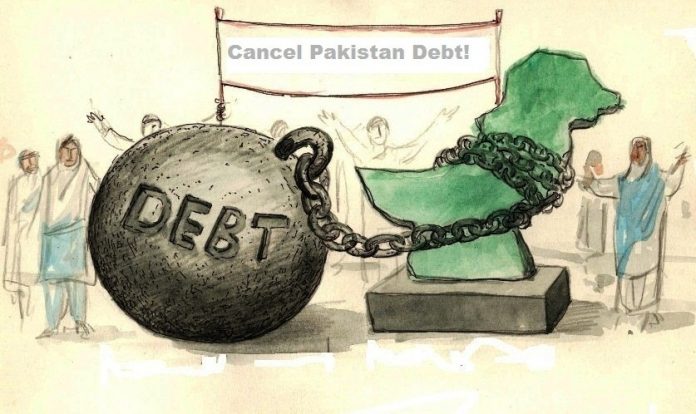
LAHORE: The State Bank of Pakistan’s annual report on the “State of Economy” for FY18 released on Thursday said gross public debt rose by 16.6% during the previous FY18 growing by almost twice the rate of the rise recorded in FY17.
According to the central bank, rising macroeconomic balances and widening of twin deficits had contributed to the acceleration of Pakistan’s debt accumulation.
Consequently, the gross public debt rose by 5.6% to 72.5 percent of GDP by the end of June 2018 and similar trends were exhibited in government debt (public debt minus government deposits held with the banking system).
The report stated the debt-to-GDP ratio remained higher than the 60% limit foreseen in the Fiscal Responsibility & Debt Limitation Act (FRDLA), 2005.
“In absolute terms, gross public debt reached Rs 25.0 trillion by end-June 2018, showing an increase of Rs 3.5 trillion during FY18.
More than half of this record accumulation in gross public debt in a single year was contributed by public external debt, which grew by 30.1%,” said SBP.
The major rise in public debt was attributed to fresh disbursements from China, foreign commercial banks and proceeds from Eurobond/Sukuk issuance.
Also, revaluation losses due to an appreciation of international currencies against the dollar and depreciation of PKR against the greenback contributed to this high growth in public external debt during FY18, said the central bank.
Moreover, from this Rs2 trillion expansion in external public debt, approximately Rs1.1 trillion addition was due to the local currency’s depreciation against the US dollar and appreciation of major currencies against the greenback.
However, the central bank said a “large share of external debt still comprises of concessionary loans from multilateral agencies, it may pose challenges for future debt servicing when looked in the context of the rising global interest rates and stressed external account position.”
The central bank warned that the increasing share of external debt may intensify the revaluation impact in case of excessive exchange rate fluctuations.
It added interest payments on external debt had started to grow owing to a rise in the stock of external debt and an upward trend in LIBOR.
Viewing from a sustainability perspective, the SBP said, “the solvency and liquidity ratios show deterioration, while indicators measuring servicing capacity show improvement due to both increase in exports and a decline in debt servicing.”
As per the central bank, in terms of maturity structure, the government continued its reliance on the short-term domestic borrowing during FY18 as it surged by 1.5 times compared to FY17.
For external debt, the average term to maturity of new loans also shortened during FY18 compared to FY17, said SBP.
“The rising share of the short-term instrument in outstanding debt stock has increased the government exposure to refinancing and interest rate risk.
The risk indicators including the share of domestic debt maturing in 1-year and average time to maturity deteriorated further in FY18,” said the central bank.
Aside from the addition to public debt, major growth in public-sector enterprises debt and loans for commodity loans and external liabilities drove Pakistan’s total debt and liabilities (TLDL) to 86.8 percent of GDP at end of June 2018 compared to end-June 2017.






















